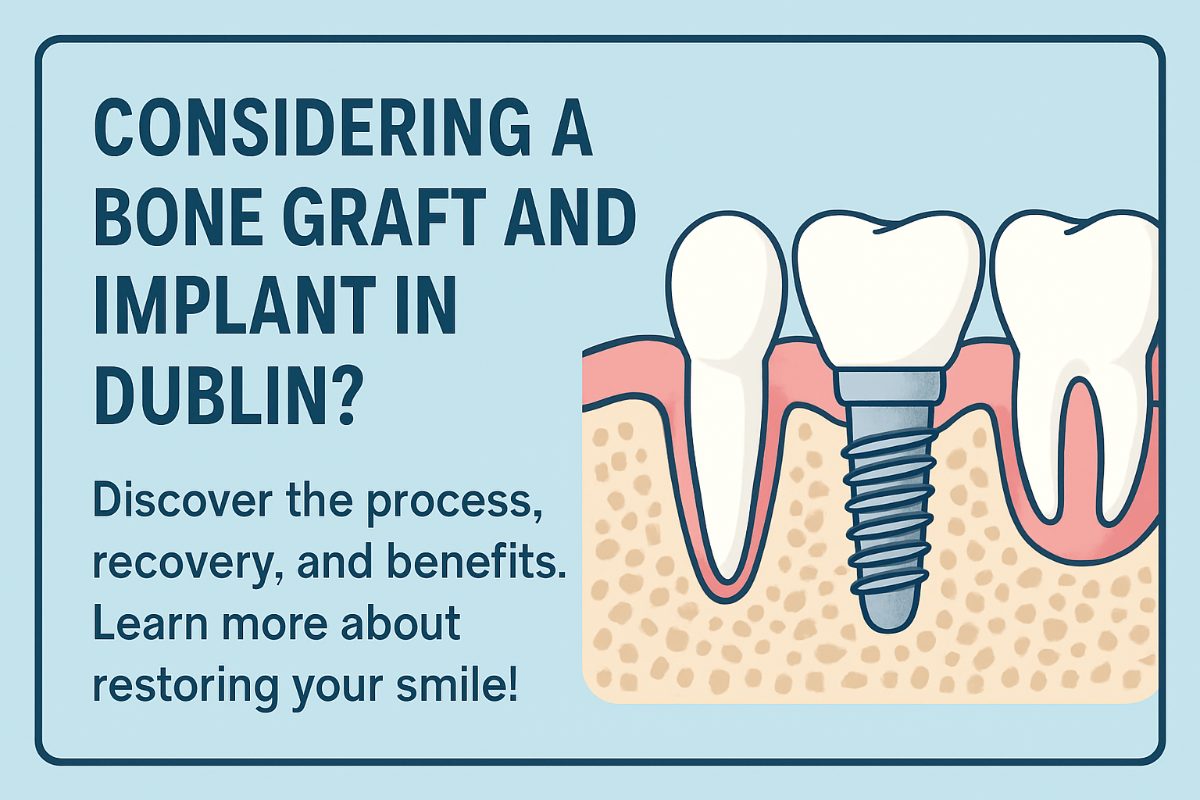If you’re considering a bone graft and implant in Stillorgan, Dublin, this guide explains what to expect, why a graft may be needed and typical outcomes and recovery times. A bone graft and implant combines rebuilding lost jaw bone with placing a dental implant to restore chewing, speech and the appearance of a natural tooth. Most people see steady improvement over months, with initial recovery in a few days and full healing and integration taking three to six months or longer depending on the procedure.
What is a bone graft and implant in Stillorgan, Dublin?
A bone graft is a surgical procedure that adds bone or bone-like material to a deficient area of the jaw. An implant is a titanium post placed into that jaw bone to act as an artificial tooth root. When used together, the graft gives the implant the stable foundation it needs to integrate with your jaw. A graft is usually needed when there has been long‑term tooth loss, infection or trauma and the existing bone is too thin or short to hold an implant securely.
Who is a good candidate for a bone graft and implant in Stillorgan, Dublin?
Common reasons patients need a graft include long-term missing teeth, bone loss from periodontal (gum) disease, infection after extraction, or facial trauma. Good candidates have reasonable overall health, controlled medical conditions and realistic expectations. Some factors that may reduce suitability include heavy smoking, uncontrolled diabetes, recent head and neck radiotherapy, or certain immune conditions. Your surgeon will review medical history and advise whether preparatory treatment can make you a candidate.
The bone graft and implant process in Stillorgan, Dublin — what to expect
Consultation and planning
At consultation you’ll have a clinical exam, digital scans and a CBCT (3D X‑ray) if needed. These images allow precise planning, reduce surprises and let your team choose the right graft material and implant position.
Types of bone grafts
Autograft: bone taken from your own body (highly compatible). Allograft: donated human bone processed for safety. Xenograft: bovine or animal-derived bone matrix. Synthetic: man-made materials such as calcium phosphate. Choice depends on defect size, location and surgeon preference.
Implant placement and healing timeline
Small grafts may be placed at the same visit as the implant; larger grafts often need three to six months to consolidate before implant placement. After implant insertion, osseointegration (bone bonding to the implant) usually takes another three to six months. Complex cases can take longer.
Recovery and aftercare
Expect some swelling, bruising and discomfort for a few days. Your team will provide pain relief advice, possible antibiotics and a soft diet while the site heals. Follow‑up visits check healing and monitor integration.
Risks, benefits and success rates of bone graft and implant
Main benefits are restored chewing, improved appearance and long‑term oral health by preventing further bone loss. Risks include infection, graft failure, nerve irritation or implant failure, though modern imaging and specialist techniques reduce these risks. Grafted sites placed by experienced teams typically show high success rates, often in the 90–95% range, depending on patient health and the complexity of the procedure.
Looking for a bone graft and implant in Stillorgan, Dublin?
Smile More Implant Centre offers advanced digital planning and specialist surgeons for complex grafting and implant cases. Dr Saad Ahsan, Trinity College Dublin graduate (DDS, PG Dip Implantology) holds multiple RCSI memberships (Dip PCD RCSI, MFD RCSI, MGDS RCSI) and has advanced training in implantology, grafting and oral surgery. Ask at your consultation about imaging, graft material options, expected timeline, risks, costs and aftercare. To book an assessment, contact the clinic to discuss your personalised treatment plan. Book a consultation to review your options for a bone graft and implant and get a realistic plan tailored to your smile and health goals.


